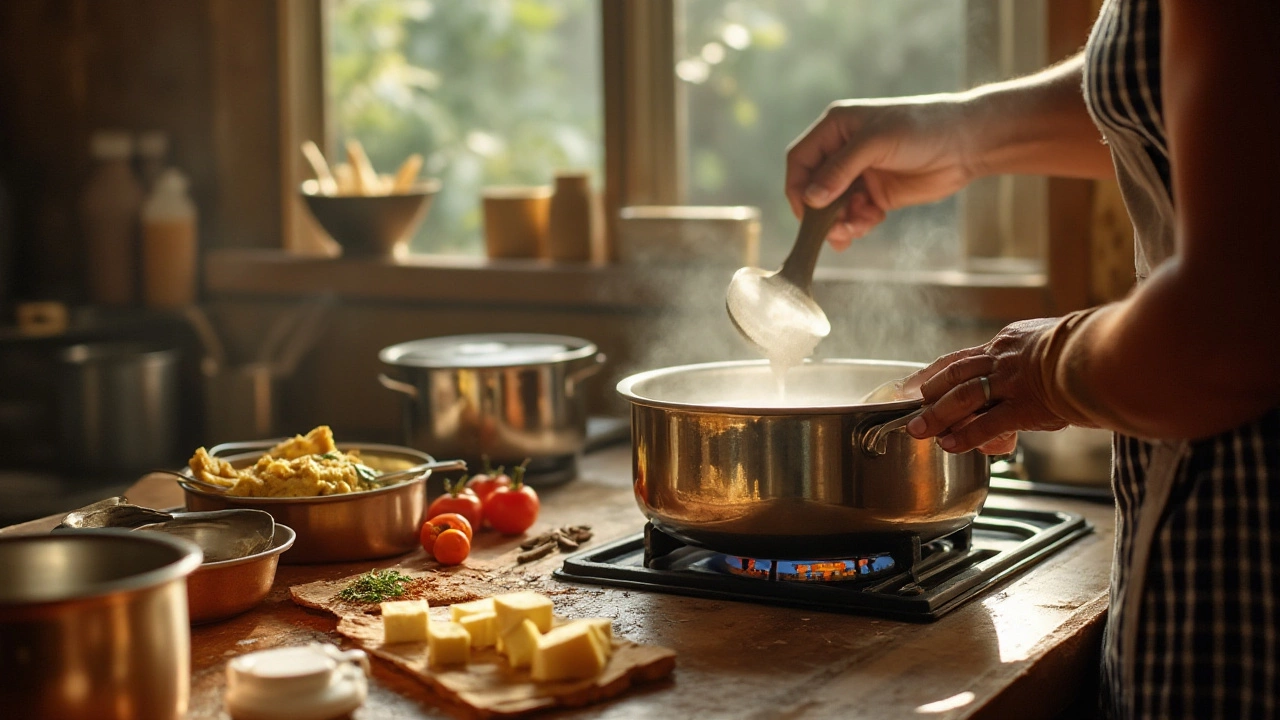Cooking Cheese: Your Go‑To Guide for Paneer, Tofu & Homemade Cheese
When working with Cooking Cheese, the art of turning milk or plant‑based bases into flavorful cheeses for Indian cooking. Also known as cheese cooking, it blends science and tradition to create textures that melt, puff, or stay firm. Cooking cheese encompasses Paneer, a fresh, non‑aged cheese made by curdling hot milk with an acid and often serves as the vegetarian protein backbone of dishes like palak paneer or paneer tikka. It also involves Tofu, a soy‑based block that mimics cheese texture while offering a milder taste, which many cooks prefer for a lighter mouthfeel. The process requires good quality Milk, the liquid foundation whose fat and protein levels dictate the final cheese firmness, and sometimes a splash of lemon or vinegar to trigger curdling.
Why does the choice of milk matter? Whole cow’s milk yields a richer, creamier paneer, while low‑fat milk produces a crumbly result. Goat’s milk adds a subtle tang, and buffalo milk gives an ultra‑soft texture prized in South Indian dishes. Each type changes the protein‑to‑fat ratio, influencing how the curd sets and how the cheese behaves when cooked. If you skip the acid step, the milk stays liquid—no cheese. Adding lemon juice, as explained in our "Lemon Juice Makes Milk Curdle" article, introduces the necessary pH drop to separate curds from whey. The same chemistry works for tofu, where coagulants like nigari or calcium sulfate firm the soy milk.
Beyond the basics, the kitchen tools you use shape the outcome. A heavy-bottomed pot ensures even heat, preventing scorching that can alter flavor. A fine‑mesh strainer or cheesecloth helps separate curds cleanly. For paneer, pressing the curd under a weight for 30‑45 minutes sets the block, while tofu often skips heavy pressing to retain moisture. Seasoning during the curdling phase—adding salt, herbs, or spices—lets the cheese absorb flavors early, saving you extra seasoning later. This is why many chefs recommend adding a pinch of asafoetida or crushed cumin seeds while the curd forms; the aromatics embed directly into the protein matrix.
Key Techniques and Flavor Boosters
Cooking cheese isn’t just about making a block; it’s about how that block works in heat. Paneer holds its shape on a hot tawa, allowing a caramelized crust without melting away—a trait that tofu mimics when pressed firmly. Grilling, frying, or adding the cheese at the end of a curry each demands a different moisture level. If you plan to fry, dry the cheese thoroughly; excess water causes splatter and soggy texture. For creamy curries, crumble paneer or cube tofu and let it simmer briefly so the sauce coats every piece.
Health‑conscious cooks often compare the nutritional profiles of paneer and tofu. Paneer offers more calcium and saturated fat, while tofu supplies complete plant protein and lower calories. Both fit into a balanced Indian diet, especially when paired with fiber‑rich dals or whole‑grain rotis. Understanding these trade‑offs helps you decide which cheese suits a particular meal—whether you need the heft of paneer for a hearty korma or the lightness of tofu for a quick stir‑fry.
All these details build a solid foundation for anyone eager to explore cooking cheese at home. Below you’ll find articles that dive deeper into flavor tricks, ingredient swaps, and step‑by‑step recipes, so you can experiment with confidence and taste the results in every bite.

Is Making Paneer at Home Worth the Effort?
Curious about crafting your own paneer at home? This article explores whether homemade paneer is worth your time and effort. Discover the health benefits, taste differences, and cost-effectiveness of making paneer from scratch. You'll also find simple tips and tricks for perfecting your homemade cheese-making process. Let's delve into the appealing world of fresh paneer and why it might just become a staple in your kitchen.